How to know exactly where the ball's going
With knowledge about scheme and spatial awareness, you can predict who's going to get the football before it happens.
Hello! Today, Richard and I launched Split Zone Duo, a new podcast about college football. The first episode is out now and features a friend of our program. We’ll take pride in talking about all parts of college football, and in that spirit, our first episode spends time on the SWAC, the Sun Belt, the ACC, the AAC, the SEC, the Big 12, and a couple of independent programs. We also answered some questions from our Twitter and our Discord server, which you can join via Patreon if you’d like.
Like this newsletter, the podcast is 100% free. We’d love for you to subscribe, listen, and leave a review on your preferred app, perhaps via Apple, Spotify, Overcast, Stitcher, or RSS. We’re still waiting on Google.
Now, a lesson on scheme.
Every football play is an elaborate chess match with 22 pieces. Coaches spend dozens of hours per week trying to figure out how to get the tiniest numbers advantage in one area for about one second at a time. Players must master a playbook hundreds of pages thick so they can gain an extra step a few times per season. The viewer could be forgiven for not understanding all there is to know about Xs and Os.
Fortunately, I’ve spent the last few years digging in on this stuff. I’ve been lucky to make friends with some smart coaches and players who have walked me through football’s schematic underpinnings in copious detail. I’ve gotten to the point where I can take a look at a piece of all-22 game film and predict with good accuracy what’s going to happen.
In this newsletter, I will walk you through some of the finer points.
Typically, you can tell where the ball is going by whether there are defenders nearby.
Take this play from the first FBS vs. FBS game of 2020’s bizarre pandemic season. South Alabama is lined up near Southern Miss’ goal line. Let’s look closely:

There are a few ways I know the ball is going to the South Alabama receiver on the left here.
First, Southern Miss doesn’t have anyone near him.
Second, we’ve got a tell: a Seriously Miffed Defender.
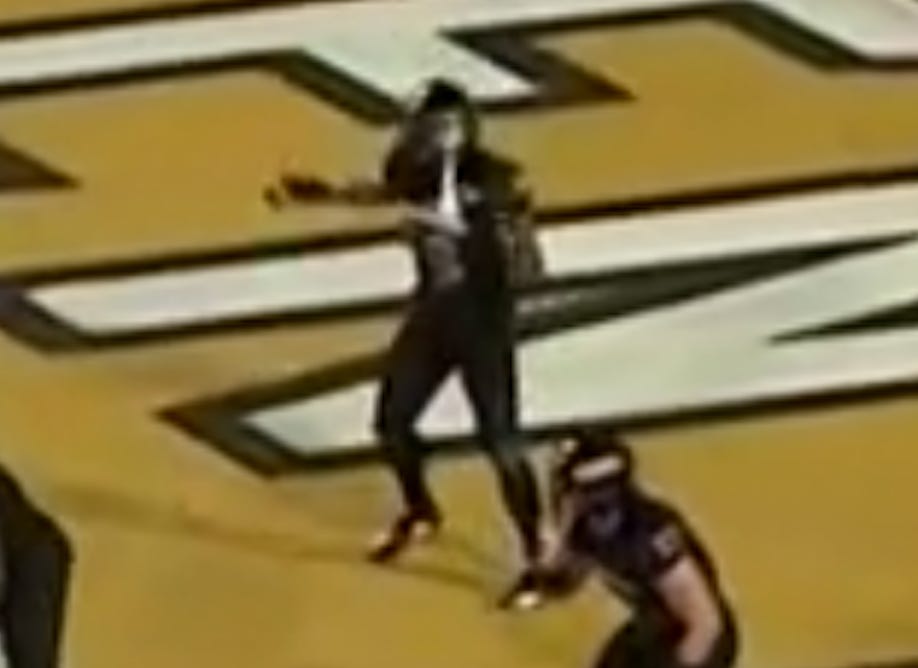
Indeed, the QB threw the ball to the receiver on the left, who caught it in the end zone. The play was whistled dead to review the previous play, so it didn’t count, but part of being a scheme savant is following process rather than results.
In 2017, Kentucky came out in a similar defensive look against Florida. The Wildcats ran a defender off the field right before the snap but elected not to line anyone up near the Gators’ Freddie Swain, who received the ball for the winning touchdown:

If you knew what to look for (the lack of a defender anywhere near the receiver), you knew the ball was going to the top of your screen.
Sometimes, you have to see how a play develops.
In 2019, Miami played South Florida powerhouse FIU. Sometimes, you can’t tell at the snap where the ball is going. You have to be an advanced football watcher as the pieces start to move.
At the snap, you’d have no clue where the ball is going here:
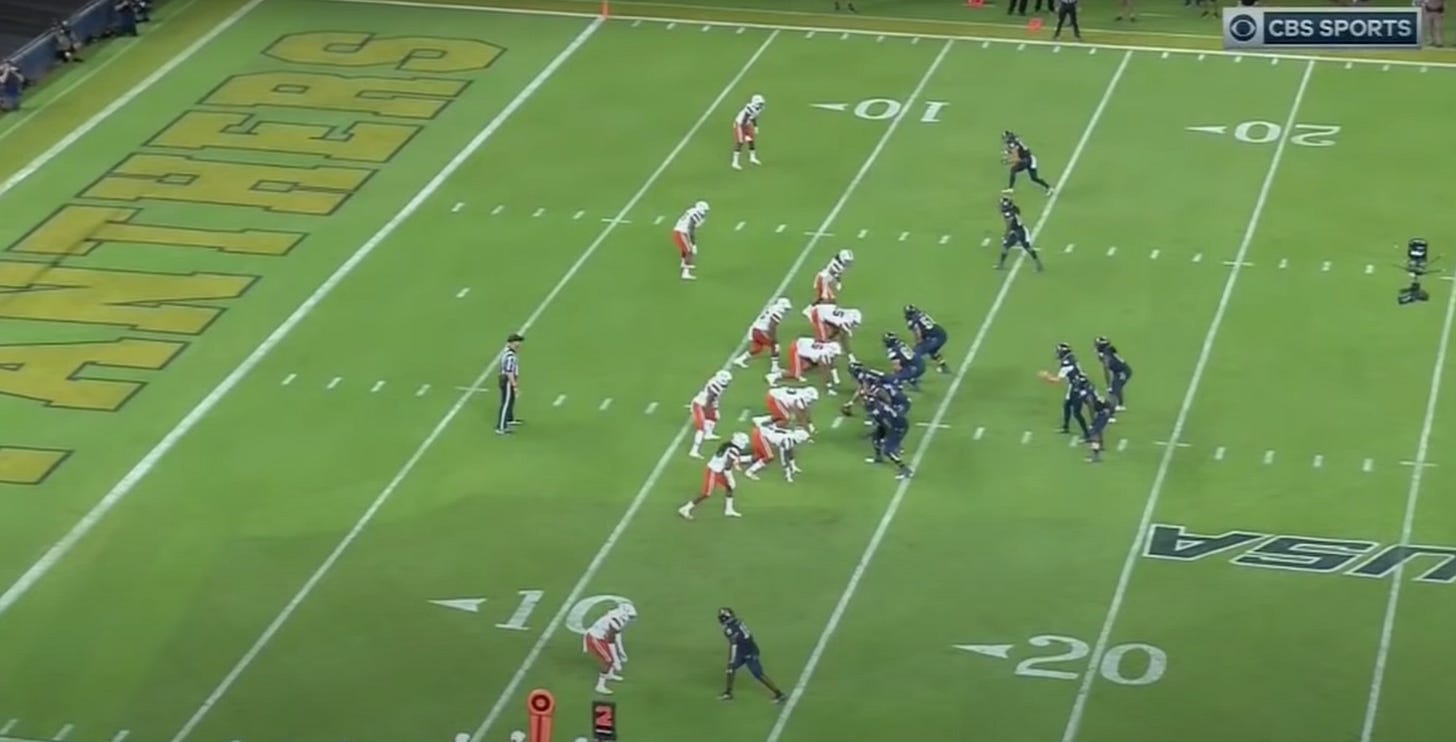
But a moment later – if you’re able to process information quickly enough – you’ll be able to see the future unfolding:
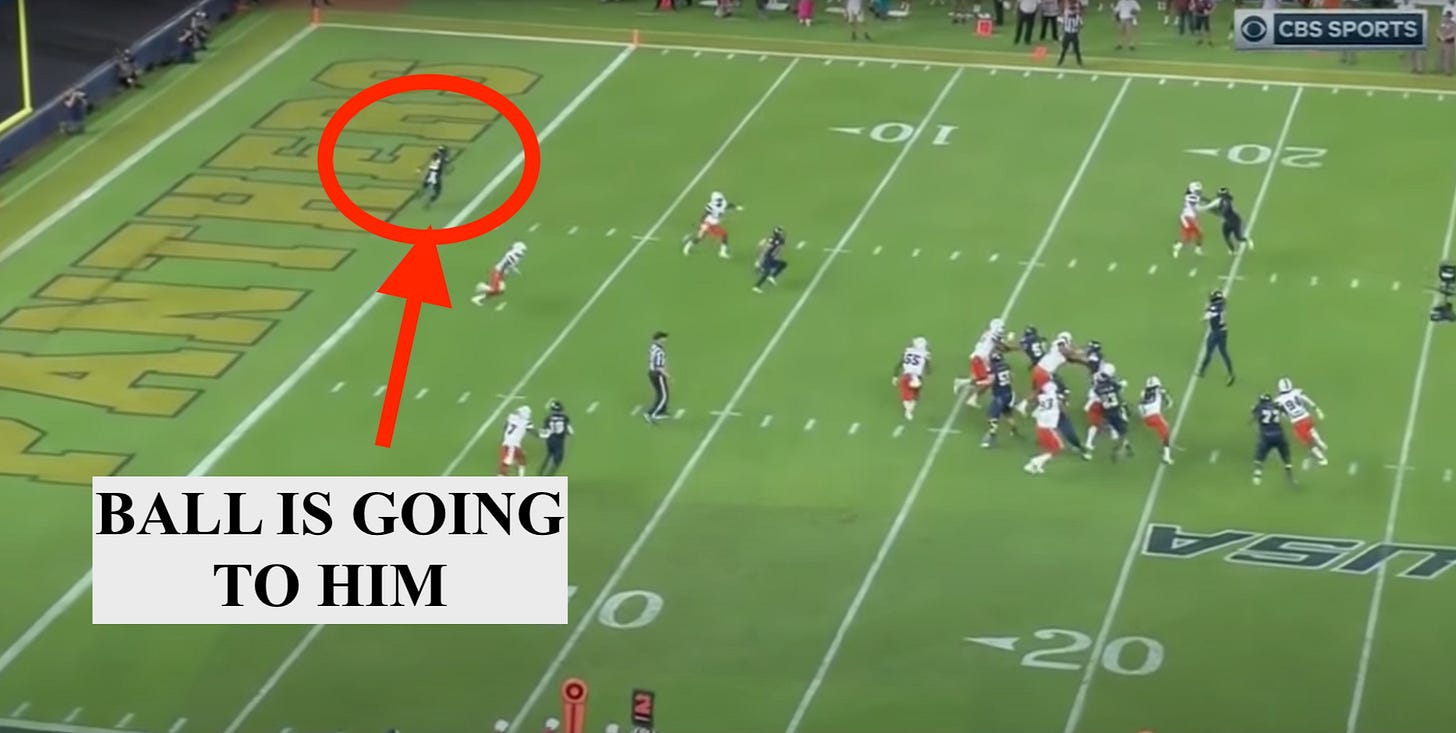
The key there, again: There’s nobody near the receiver. If a receiver has enough square acreage around him to build a modest house, the ball is likely going to him. This play also has a Seriously Miffed Defender:

The following year, Miami achieved spiritual redemption by scoring a 75-yard touchdown on Louisville after a similar schematic decision by the Cardinals:
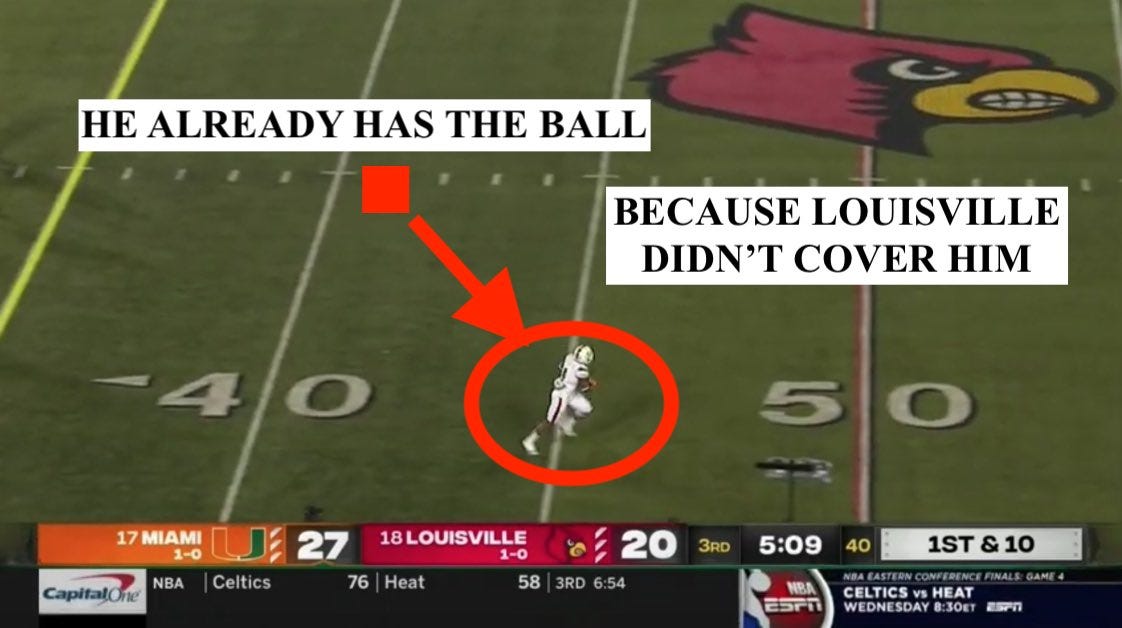
The “don’t cover the receiver” strategy does not discriminate.
You can use this knowledge to enhance your enjoyment of the professional game as well.
It is often said that scheme filters up from college to the pros. This has been particularly true of run/pass options, but we’ve also seen NFL defenses adopt the college strategy of not covering receivers.
In this exotic coverage the Broncos rolled out against the Lions a few years ago, three defenders converged to cover open grass, leading to an easy touchdown when Matt Stafford made the (surprising) decision to instead throw to this guy:

We’ve also seen NFL teams get conned with hidden-man tricks that are historically more common in college. During the peak of the Patriots’ early run under Bill Belichick, the Rams mounted an aggressive non-coverage that led to this:
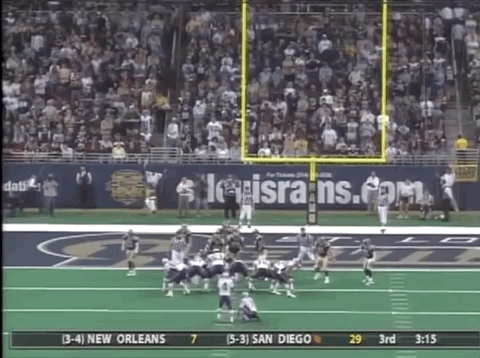
The Rams didn’t see it coming. You didn’t see it coming from that broadcast angle, either. But anyone else in the stadium could’ve predicted with pinpoint accuracy where New England was going to send the ball on that play.
This kind of analysis even works when you’re dealing with the most sophisticated schemes.
Lincoln Riley’s Oklahoma is widely regarded as the most fearsome offense in college football, with enough bells and whistles to make an amateur analyst’s head spin. But there are still clues.
Take this play against Houston in 2019’s season opener. We didn’t have any film yet on what OU’s offense would be for the rest of the season, but by identifying CeeDee Lamb (one of the best wideouts in the country, standing far away from any Houston defenders) and seeing where Jalen Hurts’ eyes were looking, we knew the outcome:

Hurts did throw the ball to Lamb, who caught it:
There is nothing more satisfying than taking the time to study the ins and outs of football, then watching as all your knowledge is borne out on the field.
Thank you for reading. Subscribe to Split Zone Duo, if you like, and give it a listen and review.




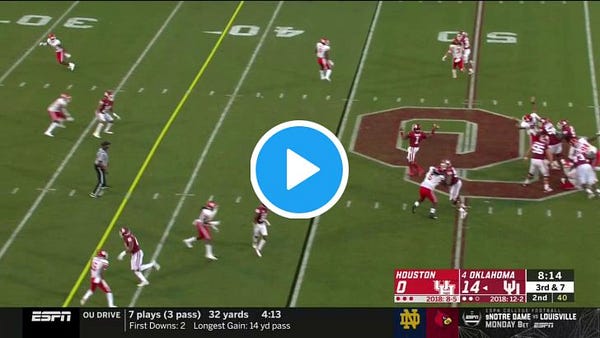
This is the kind of insight found only with the Moon Crew
My favorite thing to read--hard hitting, deep level football analysis on a play-by-play basis. Just outstanding work.